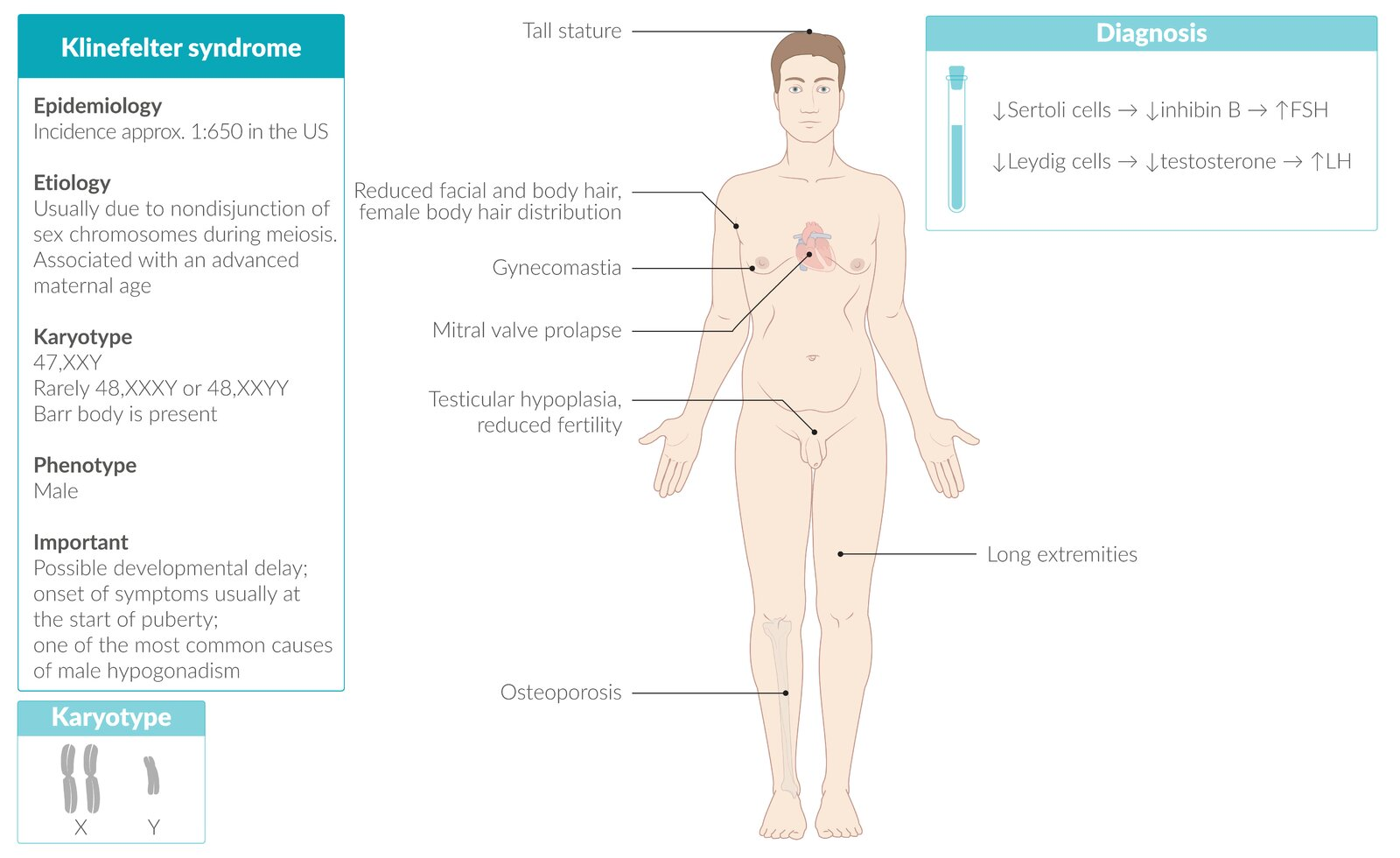Epidemiology
Etiology
- Associated with advanced maternal age
Pathophysiology
- 47,XXY (rarely 48,XXXY or 48,XXYY)
- Presence of a Barr body (inactivated X chromosome)
- Testicular dysgenesis leads to:
- Seminiferous tubules dysgenesis → loss of Sertoli cells → ↓ inhibin B → ↑ FSH
- Leydig cell dysfunction → ↓ testosterone → ↑ LH
- Both ↑ LH and ↑ FSH lead to increased conversion of testosterone to estrogen.
Clinical features

- Eunuchoid growth pattern: tall, slim stature with long extremities (Growth plate closure is delayed )
- Gynecomastia
- Testicular atrophy
- Possible developmental delay
- Neurocognitive dysfunction (impaired executive function and memory, decreased intelligence)
- Associated disorders
Diagnostics
Treatment
